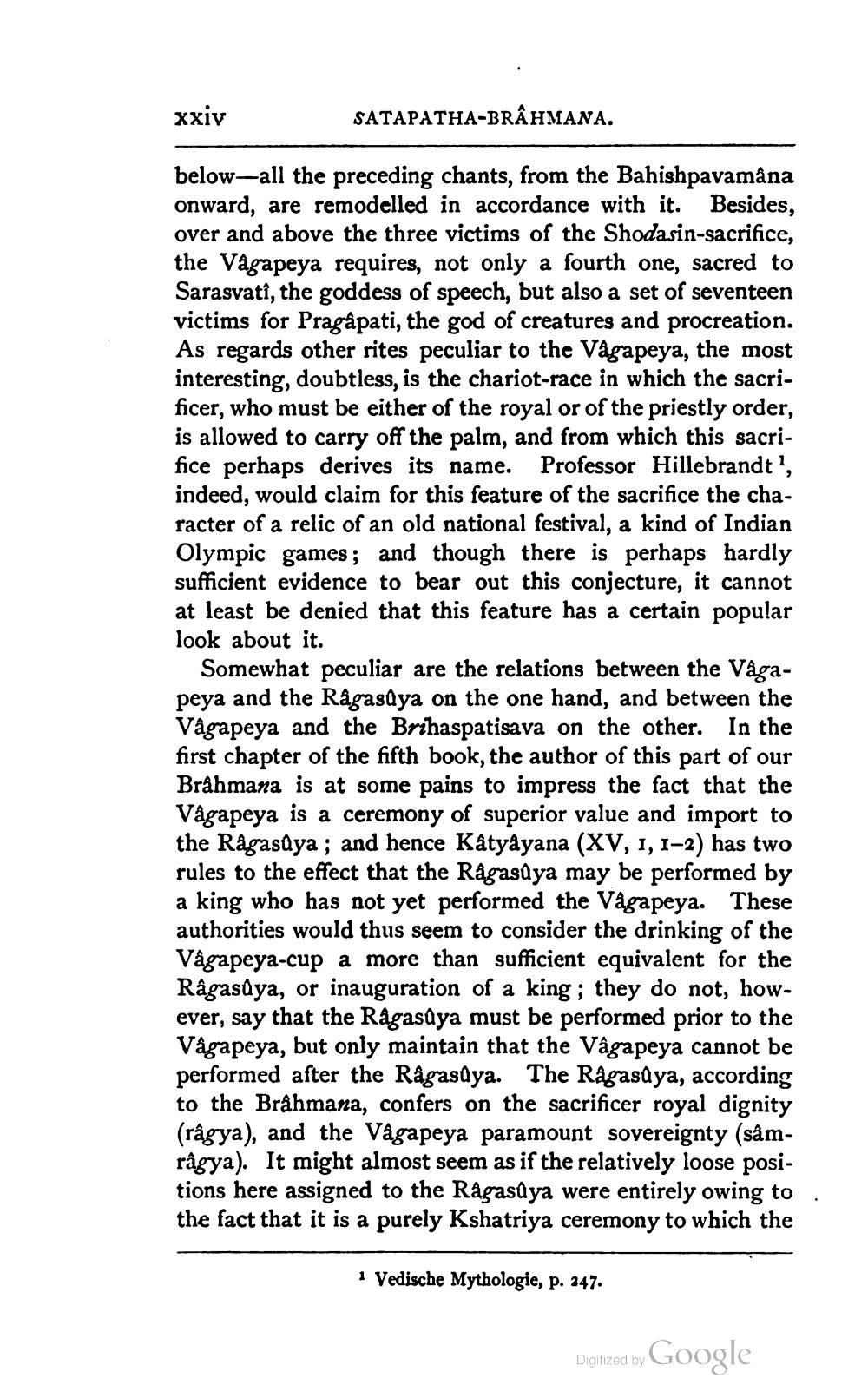________________
xxiv
SATAPATHA-BRAHMANA.
below-all the preceding chants, from the Bahishpavamâna onward, are remodelled in accordance with it. Besides, over and above the three victims of the Shodasin-sacrifice, the Vagapeya requires, not only a fourth one, sacred to Sarasvatî, the goddess of speech, but also a set of seventeen victims for Pragâpati, the god of creatures and procreation. As regards other rites peculiar to the Vagapeya, the most interesting, doubtless, is the chariot-race in which the sacrificer, who must be either of the royal or of the priestly order, is allowed to carry off the palm, and from which this sacrifice perhaps derives its name. Professor Hillebrandt ', indeed, would claim for this feature of the sacrifice the character of a relic of an old national festival, a kind of Indian Olympic games; and though there is perhaps hardly sufficient evidence to bear out this conjecture, it cannot at least be denied that this feature has a certain popular look about it.
Somewhat peculiar are the relations between the Vâgapeya and the Râgasûya on the one hand, and between the Vâgapeya and the Brihaspatisava on the other. In the first chapter of the fifth book, the author of this part of our Brahmana is at some pains to impress the fact that the Vâgapeya is a ceremony of superior value and import to the Ragasûya; and hence Kâtyâyana (XV, 1, 1–2) has two rules to the effect that the Rågasûya may be performed by a king who has not yet performed the Vågapeya. These authorities would thus seem to consider the drinking of the Vâgapeya-cup a more than sufficient equivalent for the Râgasûya, or inauguration of a king; they do not, however, say that the Râgasûya must be performed prior to the Vågapeya, but only maintain that the Vâgapeya cannot be performed after the Râgasûya. The Ragasûya, according to the Brahmana, confers on the sacrificer royal dignity (râgya), and the Vâgapeya paramount sovereignty (sâmrâgya). It might almost seem as if the relatively loose positions here assigned to the Râgasûya were entirely owing to the fact that it is a purely Kshatriya ceremony to which the
1 Vedische Mythologie, p. 247.
Digitized by
Google




